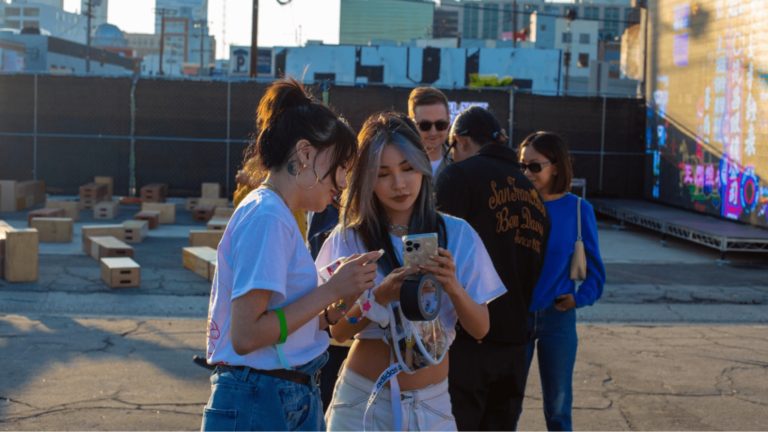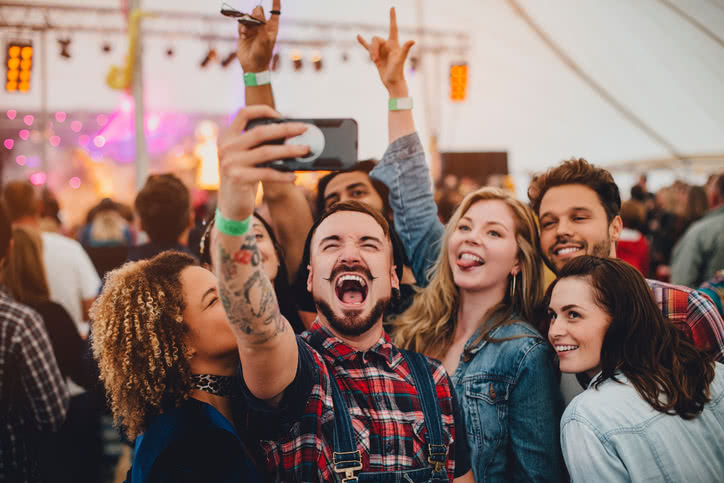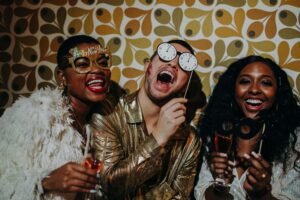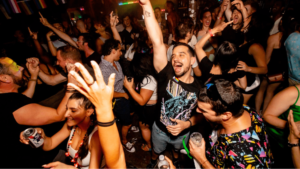Social media isn’t just where we scroll; it’s where the next big night gets discovered. Our TRNDS 2025 report says it loud: 64% of Gen Z and 61% of Millennials find events on social media.
If your event isn’t part of that conversation, you’re missing a major opportunity. The key? A mix of organic storytelling to keep your fans engaged and smart paid campaigns to find new ones.
Whether you’re building anticipation, driving last-minute sales, or keeping the post-event glow alive, our Advanced Social Media Marketing Strategies for Music and Performing Arts Events will help you ensure every scroll counts.
1. Create hyper-targeted paid social campaigns with tracking pixels
Because music and performing arts audiences are so diverse, precision targeting ensures your budget only reaches the people who matter most.
By creating tracking pixels in your Meta Ads Manager and (coming soon) TikTok accounts and linking them to your Eventbrite event pages, you can build custom audiences around fan intent. This allows you to retarget warm audiences and build lookalike audiences of high-intent fans.
And Eventbrite’s Multi-Event Ads let you automatically promote all of your upcoming events on Instagram and Facebook.
When executed well, this precision not only lowers cost per acquisition but creates marketing that feels personal, timely, and relevant.
Pro tip: “Use your pixel data strategically. Build separate custom audiences for different engagement levels: people who viewed your event page, those who started checkout, and past attendees. Then tailor your ad messaging to match their intent. For example, ‘Last tickets left!’ for cart abandoners, or ‘You loved our last show—see what’s next!’ for repeat fans.
Marta Martin Buenaposada, Performance Marketing Lead, Eventbrite.
Combine this with lookalike audiences from your highest-converting fans to reach new people most likely to buy. Review your pixel data weekly to refine your audience segments and continuously lower your cost per acquisition.”
Checklist:
- Eventbrite’s Smart Audiences makes it easy to find new attendees, connect with them via social ads, and sell out your events.
- Track which ads — Reels or Stories — actually lead to sales.
- Retarget fans who visited your ticketing page but didn’t purchase.
- Create lookalike audiences based on past ticket buyers for your shows.
- Use location targeting to hone in on fans within a 10-50 mile radius of your venue.
- Take it further with geographic radius targeting for touring acts or local runs, ensuring ads hit fans most likely to attend.
2. Measure the impact of your partners with affiliate and influencer tracking
In the music and arts world, peer influence is gold. Whether it’s superfans or community influencers, you can now track and quantify word-of-mouth buzz and reward the people driving your ticket sales.
By assigning an Eventbrite tracking link to ambassadors, you’ll see exactly which partners convert and can tier rewards accordingly.
Pro tip: “Build tracked link placement into affiliate and influencer contracts to ensure trackability from your partnerships. Consider link in bio placement, partner ads on TikTok or Instagram, Instagram Story stickers, and blog or newsletter links.”
Sophie Vershbow, Head of Social Media & Influencer Marketing, Eventbrite.
Checklist:
- Segment affiliate reports by influencer type (e.g., micro vs. macro creators).
- Encourage each artist on your lineup or cast member in your production to share their unique link. Artists often convert better than ads.
- Use Instagram Collabs to co-author posts with other accounts. Partner on these posts with artists, venues, and vendors to spread the word about your event.
- Reward ambassadors with VIP access, comp tickets, or revenue share.
- Arrange partner agreements with sponsors, vendors, speakers, and influencers to post about your event, using marketing assets you provide, or their own original content.
- Use social listening tools, like Brandwatch or Sprout Social, to help you understand whether influencer-driven content is creating the right emotional response among potential attendees.
3. Create multi-platform content ecosystems

Music and performing arts thrive on storytelling. Behind-the-scenes clips, rehearsal footage, artist interviews, and livestreams can all be fuel for your sales funnel. The trick is connecting content across platforms and linking every post back to ticket sales.
Eventbrite’s TikTok and Meta integrations make it easy to promote events and sell tickets directly on their platforms.
Pro tip: “Short-form video apps like TikTok, Instagram, and YouTube crave episodic content that brings viewers back to the page over and over again. Aim for something you can pull off consistently. For example, start a behind-the-scenes series or share batch interviews with visiting artists to release on a weekly basis.”
Sophie Vershbow, Head of Social Media & Influencer Marketing, Eventbrite.
Checklist:
- Create an Instagram growth playbook campaign to increase your following by producing Instagram Stories Ads that move interested fans directly into your profile.
- Use a Link in Bio tool like Linktree to house all your ticket links in one place.
- Lean into Reels and Stories for behind-the-scenes and countdown content.
- Use TikTok Live or Instagram Live to host Q&As with performers.
- Use trending sounds and tap into TikTok challenges aligned with your event vibe.
- Use stickers (polls, countdowns, “swipe up” links) to drive interaction.
4. Harness AI, Eventbrite Ads, and data optimisation for efficiency

Eventbrite’s AI-powered tools will save you time so you can focus on producing the best possible event. Social media ad campaigns using Eventbrite’s AI-powered copy see 29% higher return on ad spend, a 17% decrease in cost-per-click, and organisers launch social campaigns 38% faster using our AI tools.
And get in front of more event-goers with Eventbrite Ads, with sponsored listings on top spots across Eventbrite, including search results, homepage, category pages, the iOS app, and related events. Events promoted with Eventbrite Ads get 9x more visibility and sell 4x more tickets.
Checklist:
- Utilise AI content recycling tools like Opus, which can take video content you already have and repurpose it as social-ready, short-form video content.
- For written content, HootSuite uses an AI assistant to rewrite old posts or create social media captions from long-form content.
- AI social media tools on platforms like Buffer and SocialBee use AI to analyse and optimise social media content based on its intended destination.
- Pick a goal for your Eventbrite Ad, like maximising your reach or driving more clicks to your event, and our platform will automatically optimise for the best results.
- Feed Eventbrite conversion data back into your ad platforms to identify your best-performing content types, such as clips, quotes, and testimonials.
5. Let your fans market your event for you with social proof
Social proof — feedback, reviews, recommendations, and testimonials — is powerful. According to a 2025 survey, 53% of consumers want to read reviews detailing positive experiences. In music and the performing arts, where connection and community are just as important as the show itself, what others say about you can make all the difference.
When your social proof feels genuine, it builds credibility, strengthens trust, and attracts the right audience to your events, so let your fans help tell your story. Every ticket sold, every shared photo, and every rave review adds momentum and excitement around what you do.
Pro tip: “Make sure your brand is top of mind when attendees are posting in-the-moment. Have your social media handles on signage throughout the venue and clearly linked on your website so there’s no excuse for them to leave it off their post.”
Sophie Vershbow, Senior Group Manager, Social Marketing, Eventbrite.
Checklist:
- Collect and showcase audience feedback with post-show surveys and reaction videos
- Ask attendees to leave reviews on Eventbrite, Google, or social channels (remember to make sure they know to include your event hashtags)
- Turn fans into storytellers by reposting their photos and videos
- Use artist and performer endorsements and utilise your access with exclusive backstage clips and interviews
- Showcase numbers and milestones like attendance stats, sell-out success, and community impact
- Spotlight loyal fans by sharing stories of repeat attendees
READ MORE: Advanced Email Marketing Strategies for Music and Performing Arts Events






